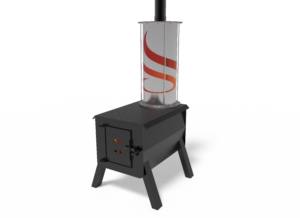These Penn students invented a way to keep encamped refugees warm through the winter
 April 3, 2017
Category: Featured, Purpose, Short
April 3, 2017
Category: Featured, Purpose, Short
Disclosures
Editor's note: The cost of the attachment has been updated. (4/6, 11:33 a.m.)Lebanon’s Beqaa Valley is perhaps been best known for its 6,000-year-old wine industry. For the past five years, however, the valley’s reputation as home to lush vineyards and farms — vineyards and farms that have long-fueled Lebanon’s economy — have also been home to Syrian refugees.
As of December 2016, Lebanon is housing approximately one million Syrian refugees — one fifth of Lebanon’s native population.
Refugees in the Beqaa Valley endure the region’s cold winters, protected from the weather only by their clothes, their tents and heat produced by wood stoves.
Wood stoves waste a lot of heat. That’s why Penn seniors Mazin Blaik, Stephen Michalowski, Justin Gonsalves and Kellen Sanna are building an attachment that captures and stores that heat. The attachment, called Ember, provides an additional 200 minutes of warmth, extending heating time by 150 percent with the same fuel input, according to the group.
Blaik, the son of Al-Bustan founder Hazami Sayed, got in touch with United Nations officials last fall to inquire about the needs of refugees in Lebanon. In December, Blaik visited a few of the encampments in the valley. When the semester began, Blaik and his fellow engineering majors began building out what would become Ember.
According to the group, they’ve put in about 67 hours of testing to date. (Since Penn doesn’t allow fires on-campus, the group has been testing Ember in Sayed’s garden).
Right now, the attachment costs $66.77 to produce. And though Ember began as the group’s senior design project, they said they’re hoping to continue working on it after graduation this spring.
Trending News










